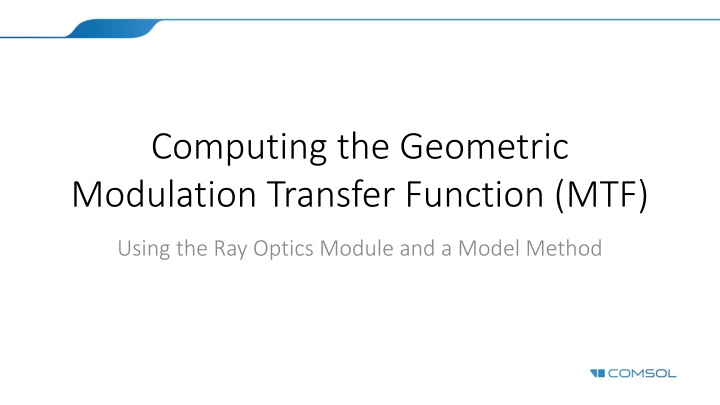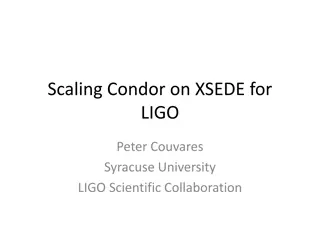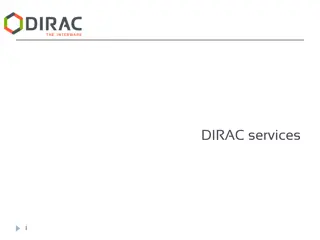
Computing Geometric Modulation Transfer Function Using Ray Optics
Learn how to compute the geometric modulation transfer function (MTF) using the ray optics module and a model method. Understand the modulation transfer function and its calculation from the line spread function. Explore the model methods and intermediary steps involved in determining MTF values for optical systems.
Download Presentation

Please find below an Image/Link to download the presentation.
The content on the website is provided AS IS for your information and personal use only. It may not be sold, licensed, or shared on other websites without obtaining consent from the author. If you encounter any issues during the download, it is possible that the publisher has removed the file from their server.
You are allowed to download the files provided on this website for personal or commercial use, subject to the condition that they are used lawfully. All files are the property of their respective owners.
The content on the website is provided AS IS for your information and personal use only. It may not be sold, licensed, or shared on other websites without obtaining consent from the author.
E N D
Presentation Transcript
Computing the Geometric Modulation Transfer Function (MTF) Using the Ray Optics Module and a Model Method
The Modulation Transfer Function The optical transfer function (OTF) is a measure of an optical systems ability to resolve an object at a given spatial frequency. OTF= ?????? ???????? C??????? =?max ?min ?max+ ?min The OTF is a vector quantity (i.e., including phase). But, the modulation transfer function (MTF, amplitude only) is commonly used. In the following example, we implement a model method to compute the geometric MTF. ????? ????????
The calculation It can be shown (e.g., W. Smith, Modern optical engineering , 2000) that the modulation transfer function at a given spatial frequency can be computed from the line spread function LSF( ) as follows: MTF( ) = (Lc2( ) + Ls2( ) )1/2 , where Lc( ) = ??? ? cos 2? ? ?? ??? ? ?? Ls( ) = ??? ? sin 2? ? ?? ??? ? ?? is the spatial location on the detector plane. The MTF can be computed separately in the sagittal (x) or tangential (y) directions. ,and .
The Model Method (1) For the current model method we compute the LSF using a geometrical optics ray trace. The accuracy of the LSF is therefore related to the number of rays being traced, and the number of spatial bins. The sagittal and tangential LSFs are captured in Interpolation functions. These can then be used to construct Analytic functions to be used in the integration of the expressions shown on the previous page. Normalized Line Spread Function (LSF) Spot diagram Box is +/- 11.4 m square Spatial Dimension ( m)
The Model Method (2) An intermediary step is the multiplication of the LSF with the cosine and sine functions. The area under each curve (as a function of spatial frequency ) gives the top line of the Lc and Ls computations. ???(?)sin 2 ? : ???(?)cos 2 ? : (mm-1) (mm-1) x ( m) x ( m)
The Model Method (3) The model method has a number of inputs that control the output. Their behavior can be adjusted by modifying and/or further extending the model method. Note that the hexapolar grid release is best suited for this calculation as it ensures a uniform sampling of the entrance pupil.
Some results: Petzval Lens MTF: [ x, y] = [0 , 0 ] MTF: [ x, y] = [10 , 0 ] (The original Petzval Lens model is available here: https://www.comsol.com/model/petzval-lens-55491)






















